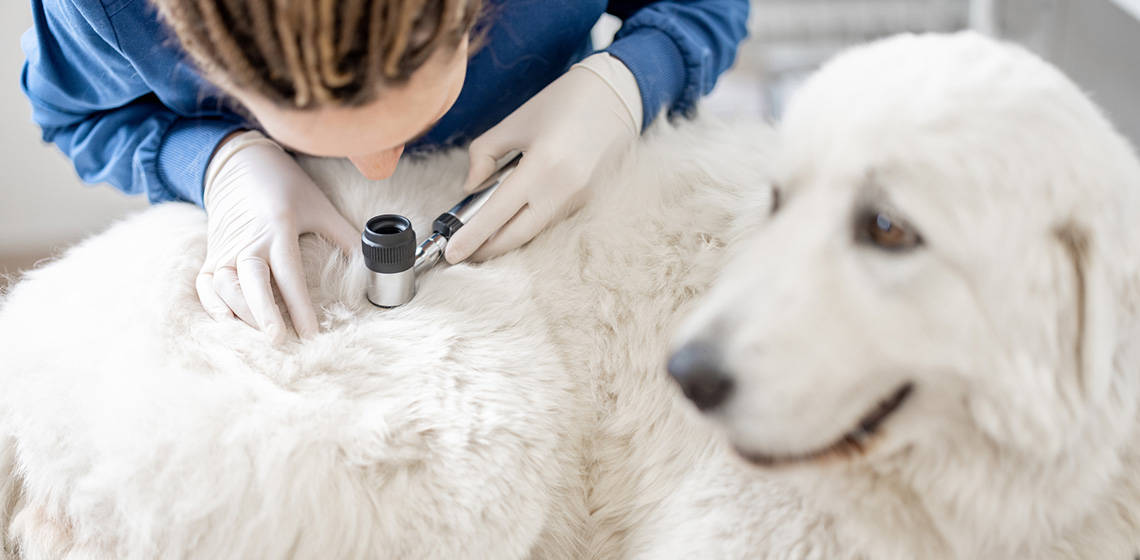Common Dog Coat and Hair Disorders: Causes, Symptoms & Treatments
Introduction
Your dog’s coat is a key indicator of its overall health. A shiny, smooth coat usually reflects good nutrition and proper care, while hair loss or dull fur can be signs of underlying health issues. In this article, we’ll explore common dog coat and hair disorders, their causes, symptoms, and effective treatments to ensure your furry friend stays happy and healthy.
1. Alopecia (Hair Loss)
Keywords: dog hair loss, patchy fur in dogs
Alopecia in dogs can be partial or complete hair loss. It may occur suddenly or gradually and can be localized or spread across the body.
Causes:
-
Allergies (food, environmental)
-
Parasites (fleas, mites)
-
Hormonal imbalances (thyroid, Cushing’s disease)
-
Stress or anxiety
-
Poor nutrition
Symptoms:
-
Bald patches
-
Excessive scratching or licking
-
Red, inflamed skin
Treatment:
Depending on the cause, treatments may include anti-parasitic medications, allergy management, hormonal therapy, or dietary improvements.

2. Dry and Brittle Coat
Keywords: dry dog coat, unhealthy dog fur
A dry, coarse coat can be a result of environmental factors or internal health issues.
Causes:
-
Low-quality diet
-
Frequent bathing with harsh shampoos
-
Underlying health conditions (like kidney or liver disease)
Treatment:
Improve the dog’s diet with high-quality proteins and omega-3 fatty acids. Use moisturizing shampoos formulated for dogs and avoid over-bathing.
3. Dandruff and Flaky Skin
Keywords: dog dandruff, flaky skin in dogs
Dandruff is often seen as white flakes on the dog’s fur and may be accompanied by itching.
Causes:
-
Dry indoor air
-
Skin infections (fungal or bacterial)
-
Poor grooming habits
Treatment:
Regular grooming, using humidifiers, and special dandruff-control dog shampoos can help. For infections, consult a vet for proper medication.
4. Mange (Mite Infestation)
Keywords: mange in dogs, mites in dog fur
Mange is caused by different types of mites and leads to severe irritation and hair loss.
Symptoms:
-
Intense itching
-
Scabs and sores
-
Hair loss in patches
Treatment:
Veterinary treatment is essential. This may include medicated baths, oral treatments, and skin scrapes to identify the mite type.
5. Fungal and Bacterial Infections
Keywords: ringworm in dogs, skin infections in dogs
Ringworm and other infections can lead to patchy fur loss and irritated skin.
Symptoms:
-
Circular bald spots
-
Red, inflamed skin
-
Bad odor from the affected area
Treatment:
Topical creams, oral antifungal medications, and medicated shampoos are common treatments. Keep infected dogs isolated to avoid spreading.

Preventing Dog Coat Problems
-
Feed a balanced diet rich in vitamins and fatty acids
-
Groom regularly to remove dirt, debris, and dead fur
-
Avoid over-bathing and use dog-specific products
-
Check for parasites and apply preventative treatments
-
Schedule regular vet checkups to catch issues early
Conclusion
A healthy coat is more than just a sign of beauty—it reflects your dog’s inner health. If you notice any unusual changes in your dog’s fur or skin, it’s important to consult your vet promptly. By understanding dog coat disorders and how to manage them, you’ll help your pet live a more comfortable and healthy life.
Hypoallergenic Pets: The Best Pet Breeds for Allergy Sufferers

